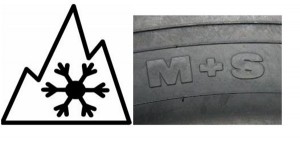Home »

B.C. tightening up highway maintenance contracts
Following an intense winter, the Ministry of Transportation and Infrastructure is tightening up requirements for maintenance contractors to make British Columbia highways safer and more reliable during winter months.

“I have heard from people and communities throughout the province that we need to take action to improve safety on our highways,” said Claire Trevena, Minister of Transportation and Infrastructure. “With that in mind, our government is moving quickly to implement changes that will ensure people are able to get where they need to go more safely through the winter months.”
The ministry is moving on a number of measures, including highway maintenance contract changes.
B.C.’s highway maintenance program is broken down into 28 service areas; 26 of the 28 service areas are up for contract renewal in 2018-19, through an open bidding process.
The new contract will require a more proactive approach to highway maintenance around winter weather events, a Ministry of Transportation and Infrastructure press release outlines.
The biggest improvements over the last contract are: On Class A highways, a return to bare pavement within 24 hours of a winter weather event ending (old standard was 48 hours) at temperatures warmer than -9 C, when de-icing chemical use is effective and an increase in patrol frequency to 90 minutes on a Class A highway like the Coquihalla during a winter storm (old standard was four hours).
Additionally, when a weather event is forecasted to occur, an increase in patrol frequency to four hours in anticipation of the weather event coming (old standard was 24 hours)
There will also be a contractor requirement to use remote weather information systems to forecast when a weather event will occur, and to spread anti-icing chemicals prior to the weather event.
Contractors will also be required to use a 9.5 millimetre abrasive size (old standard was 12.5 millimetres) to reduce potential windshield damage.
Service Area 11 in the East Kootenay was the first to sign this new contract in fall 2016, and Service Area 20 in Robson (McBride) will be up for renewal in 2021.
Other changes include stricter commercial vehicle chain-up requirements. Commercial vehicle safety is a priority, especially on mountain passes. The ministry will enforce higher fines for commercial vehicle operators not carrying chains, or who don’t chain up when mandatory. The exact fine amounts are yet to be determined. Other North American jurisdictions have fines up to $1,200 for similar violations.
Commercial vehicle lane restrictions. During winter months, limiting the lanes on certain corridors that commercial vehicles can use will reduce the risk of collisions with passenger vehicles, and highway blockages due to spun-out trucks. On key three-lane highway sections during winter, commercial vehicles will be restricted from using the far left lane, to ensure more reliable and safe access for the traveling public. When all lanes are blocked, the ability for emergency crews and maintenance equipment to move along the highway is eliminated, compounding the closure.
Investing in more weather stations and overhead signs. The ministry will invest $1.8 million over the next 3 years in weather stations and overhead highway signs to give drivers as much information as possible while traveling during challenging conditions. Weather stations are an important tool for maintenance contractors to proactively plan for winter storms, and also support compliance reporting by ministry staff. Digital overhead signs are vital in sharing real-time weather data and road conditions for all drivers.
Improved road maintenance contractor oversight. B.C. has some of the highest standards for highway maintenance in the world, and we want to ensure our maintenance contractors are meeting those standards. Ministry staff will expand contractor monitoring and auditing, including 24/7 compliance checks during winter storms. New tools and technology will enhance this oversight, including the use of GPS tracking of snow plows.
More support for safe winter driving awareness . The Winter Driving Safety Alliance, which is dedicated to improving road safety throughout the province, is managed by WorkSafeBC, and funded by the Ministry of Transportation and Infrastructure and ICBC. The alliance executes a highly successful Shift Into Winter campaign annually, using multiple platforms to promote safe winter driving and awareness. The ministry will provide more funding and social media support for this important campaign to ensure it reaches more British Columbians.
 Winter tire and chain regulation expansion. The current regulations require drivers to equip their vehicles with winter tires on most B.C. highways, and all commercial vehicle operators to carry chains, from Oct. 1 to March 31. Motorists must have either M + S (mud and snow) or mountain/snowflake tires with a minimum tread depth of 3.5 millimetres, and commercial drivers must use chains when mandatory chain-ups are in place, or conditions warrant their use. The ministry will expand the date range through to April 30 on select highways and mountain passes, to account for potential early spring snowfall events, which occur regularly in the Southern Interior and Northern regions of the province.
Winter tire and chain regulation expansion. The current regulations require drivers to equip their vehicles with winter tires on most B.C. highways, and all commercial vehicle operators to carry chains, from Oct. 1 to March 31. Motorists must have either M + S (mud and snow) or mountain/snowflake tires with a minimum tread depth of 3.5 millimetres, and commercial drivers must use chains when mandatory chain-ups are in place, or conditions warrant their use. The ministry will expand the date range through to April 30 on select highways and mountain passes, to account for potential early spring snowfall events, which occur regularly in the Southern Interior and Northern regions of the province.
The ministry will be engaging publicly with the commercial trucking industry, and other stakeholders, in the coming months on the implementation of the new safety measures, with required regulatory changes expected to be in place by next winter.
The ministry’s maintenance contractors maintain nearly 47,000 kilometres of road and 2,800 bridges in some of the most challenging terrain in Canada.
Kootenay Pass had a highest ever-recorded snowfall of 1,012 centimetres from Oct. 1, 2017 to the end of February 2018 – 148% higher than the 10-year average.
For more on the Winter Driving Safety Alliance and the annual Shift Into Winter campaign
e-KNOW







